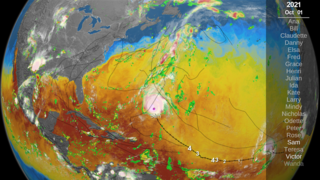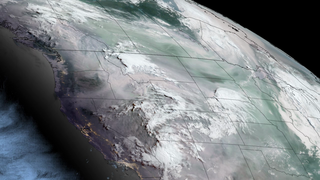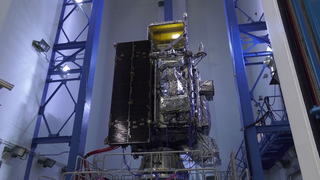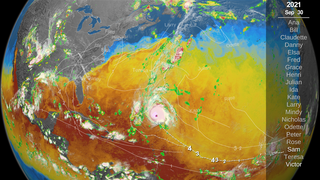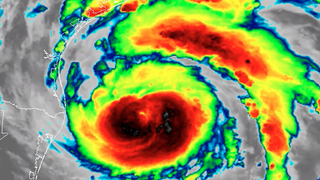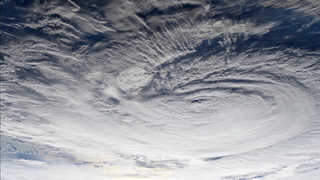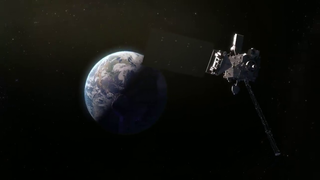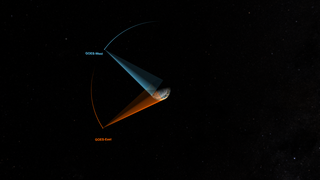Earth
ID: 14084
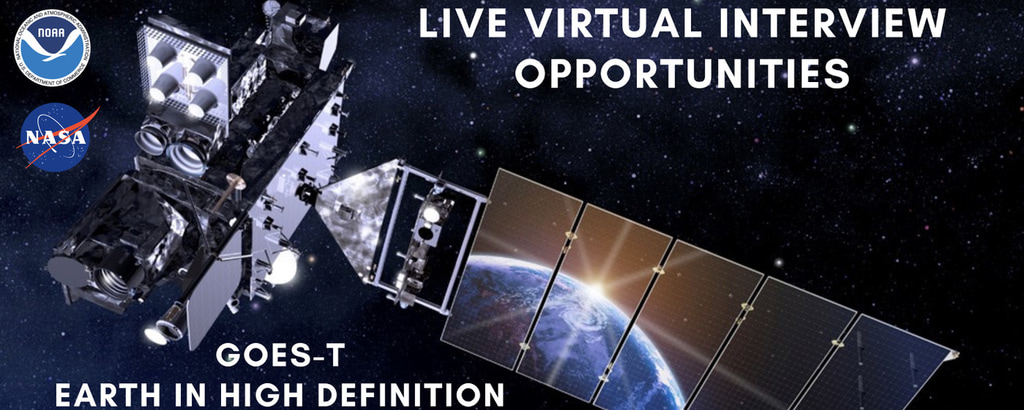
Whether you are tuning in to your local weather report to get the latest storm predictions, or checking today’s temperature on your phone - the data for those forecasts come in large part from NOAA satellites. On March 1, NASA will launch a vital new satellite for NOAA, GOES-T. This new satellite will join NOAA’s GOES fleet, a system of satellites that monitors weather both on Earth and in space. For meteorologists, this fleet provides critical data to help deliver life-saving forecasts and warnings.
Once GOES-T’s instruments have been checked out on orbit, NOAA will position the renamed “GOES-18” to watch over the U.S. West Coast, Alaska, Hawaii, Mexico, Central America and the Pacific Ocean. GOES-18 will be ideally located to detect and monitor weather systems and environmental hazards that most affect this region of the Western Hemisphere, such as atmospheric rivers, wildfires, fog, volcanic eruptions, and Pacific hurricanes.
Live interviews will be offered on March 1, 2022 from 6:00 a.m. to 1:00 p.m. EASTERN TIME.
Click here to request an interview: https://forms.gle/2HyU5ZgzmgdsJ6aLA
Suggested Anchor Intro:
(We/Our) Meteorologists bring you forecasts everyday and NOAA GOES satellites are a key factor in delivering the most accurate predictions. Today, NOAA and NASA will launch a new weather observing satellite, NOAA’s GOES-T. The third of its kind, GOES-T will not only help us prepare for weather on Earth– it will track space weather, too! Here to tell us more about it is NOAA expert xxxxxx.
Suggested Questions:
1. NOAA and NASA are launching an important Earth-observing satellite today. Can you tell us about the GOES-T satellite?
2. Can you explain why geostationary orbit is important and how the GOES mission helps our viewers get accurate, and even life-saving, weather data?
3. In recent years, we have seen quite a few environmental hazards across the globe including a surprising pressure wave from the volcanic eruption in Tonga and the wildfires in the western U.S. We have some of those images– can you tell us how GOES-T will help us when those types of events happen?
4. GOES-T is going to observe more than just weather on Earth– it will also monitor space weather! Can you tell us more about what space weather is and why we monitor it?
5. Where can our viewers go to learn more about GOES-T
* NOAA.GOV/GOEST
* @NOAASatellites
* Ciencia.nasa.gov
Longer Interview Questions:
6. The GOES fleet is a workhorse and has a lot of capabilities that may surprise you. Can you tell us about some of the surprising things GOES can do?
7. Other than helping meteorologists, who else/what industries will GOES-T help when it comes to safety?
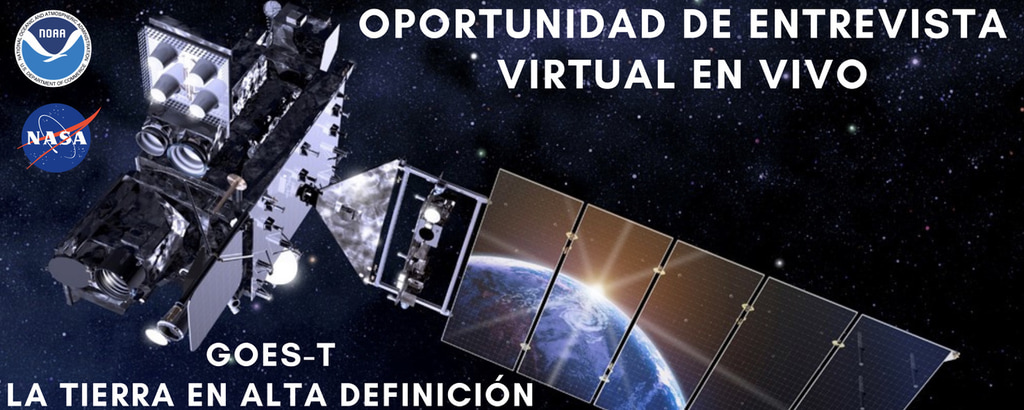
NOAA and NASA Ready to Launch Crucial New Earth-Observing Satellite Live Shots

Once GOES-T’s instruments have been checked out on orbit, NOAA will position the renamed “GOES-18” to watch over the U.S. West Coast, Alaska, Hawaii, Mexico, Central America and the Pacific Ocean. GOES-18 will be ideally located to detect and monitor weather systems and environmental hazards that most affect this region of the Western Hemisphere, such as atmospheric rivers, wildfires, fog, volcanic eruptions, and Pacific hurricanes.
Live interviews will be offered on March 1, 2022 from 6:00 a.m. to 1:00 p.m. EASTERN TIME.
Click here to request an interview: https://forms.gle/2HyU5ZgzmgdsJ6aLA
Suggested Anchor Intro:
(We/Our) Meteorologists bring you forecasts everyday and NOAA GOES satellites are a key factor in delivering the most accurate predictions. Today, NOAA and NASA will launch a new weather observing satellite, NOAA’s GOES-T. The third of its kind, GOES-T will not only help us prepare for weather on Earth– it will track space weather, too! Here to tell us more about it is NOAA expert xxxxxx.
Suggested Questions:
1. NOAA and NASA are launching an important Earth-observing satellite today. Can you tell us about the GOES-T satellite?
2. Can you explain why geostationary orbit is important and how the GOES mission helps our viewers get accurate, and even life-saving, weather data?
3. In recent years, we have seen quite a few environmental hazards across the globe including a surprising pressure wave from the volcanic eruption in Tonga and the wildfires in the western U.S. We have some of those images– can you tell us how GOES-T will help us when those types of events happen?
4. GOES-T is going to observe more than just weather on Earth– it will also monitor space weather! Can you tell us more about what space weather is and why we monitor it?
5. Where can our viewers go to learn more about GOES-T
* NOAA.GOV/GOEST
* @NOAASatellites
* Ciencia.nasa.gov
Longer Interview Questions:
6. The GOES fleet is a workhorse and has a lot of capabilities that may surprise you. Can you tell us about some of the surprising things GOES can do?
7. Other than helping meteorologists, who else/what industries will GOES-T help when it comes to safety?

Related
For More Information
Credits
Jessica Sansarran (NASA): Lead Producer
Michelle Handleman (KBR Wyle Services, LLC): Producer
Christina Brooke Mitchell (KBR Wyle Services, LLC): Producer
Katrina Jackson (USRA): Producer
Elizabeth C. Wilk (KBR Wyle Services, LLC): Lead Editor
Michelle Handleman (KBR Wyle Services, LLC): Producer
Christina Brooke Mitchell (KBR Wyle Services, LLC): Producer
Katrina Jackson (USRA): Producer
Elizabeth C. Wilk (KBR Wyle Services, LLC): Lead Editor
Please give credit for this item to:
NASA's Goddard Space Flight Center
NASA's Goddard Space Flight Center
Short URL to share this page:
https://svs.gsfc.nasa.gov/14084
This item is part of this series:
Narrated Movies
Keywords:
SVS >> HDTV
SVS >> Earth >> Satellites >> Earth Observing Fleet
NASA Science >> Earth
SVS >> GOES-T
https://svs.gsfc.nasa.gov/14084
This item is part of this series:
Narrated Movies
Keywords:
SVS >> HDTV
SVS >> Earth >> Satellites >> Earth Observing Fleet
NASA Science >> Earth
SVS >> GOES-T
